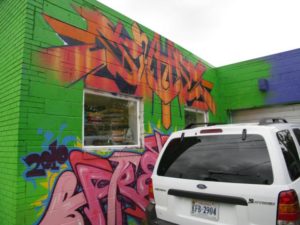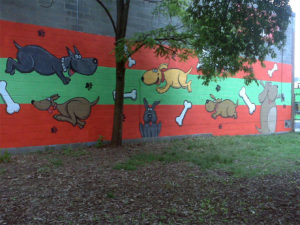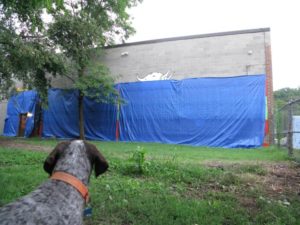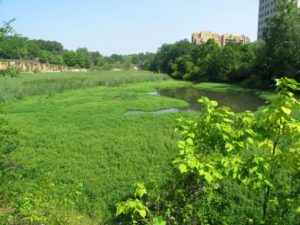Painted on the side of a cinder block warehouse and facing the popular Shirlington dog park, a large mural of happy dogs, bones and paw prints seems like a nice addition. And it would be fine with county regulators — if it wasn’t for the fact that a dog-related business commissioned it. But since the mural belongs to a small doggy daycare it’s considered advertising under county zoning code — and may eventually have to be painted over. For now, a blue tarp covers the $4,000 mural.
 Across the street, a self-service dog wash is covered in graffiti, the result of the owner allowing talented local taggers to use his store as a canvas. As long as the graffiti artists don’t depict any dogs or the word “dog,” the owner has been told, the graffiti is considered art and is not subject to regulations.
Across the street, a self-service dog wash is covered in graffiti, the result of the owner allowing talented local taggers to use his store as a canvas. As long as the graffiti artists don’t depict any dogs or the word “dog,” the owner has been told, the graffiti is considered art and is not subject to regulations.
Thus is the paradox of county regulations intended to protect Arlington from commercial eyesores but permit public artwork — even if the “advertisement” is actually beautifying a monolithic wall in a run-down neighborhood, it is considered a violation. Yet if the doggie daycare were to paint airplanes or fire trucks or elephants on the side of the wall — which is in plain sight of a steady procession of defecating dogs — it would be perfectly fine.
“For me, the issue is the lack of common sense,” said Kim Houghton, who has sunk her life savings into Wag More Dogs, the daycare in question, which she has been trying to open since July 2009. “I understand the law… but [the mural] adds to the park. Can’t an exception be made?”
No, says county zoning administrator Melinda Artman, who’s in charge of enforcing zoning laws in Arlington.
“Unfortunately, as attractive as that mural is… it meets our definition of a sign,” Artman said. She noted that Houghton did not apply for a comprehensive sign plan, which would have to be approved by the county board but which could have allowed the mural to exist legally.




